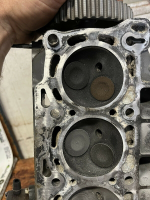carlazzomark
Cadet
- Joined
- Jan 15, 2014
- Messages
- 9
Despite changing impeller, impeller housing and gaskets, a good thermostat, and making sure all lines are clear, I still do not have telltale output. I have placed a hose on the upper unit intake with the lower unit off, and the flow/telltale are fine. I have put the lower unit in a water tub and spun the shaft with a drill safely connected to the spline, and all is normal.
What else could it be? How long can I run the engine without a telltale to warm up and test?
Thanks
What else could it be? How long can I run the engine without a telltale to warm up and test?
Thanks




















